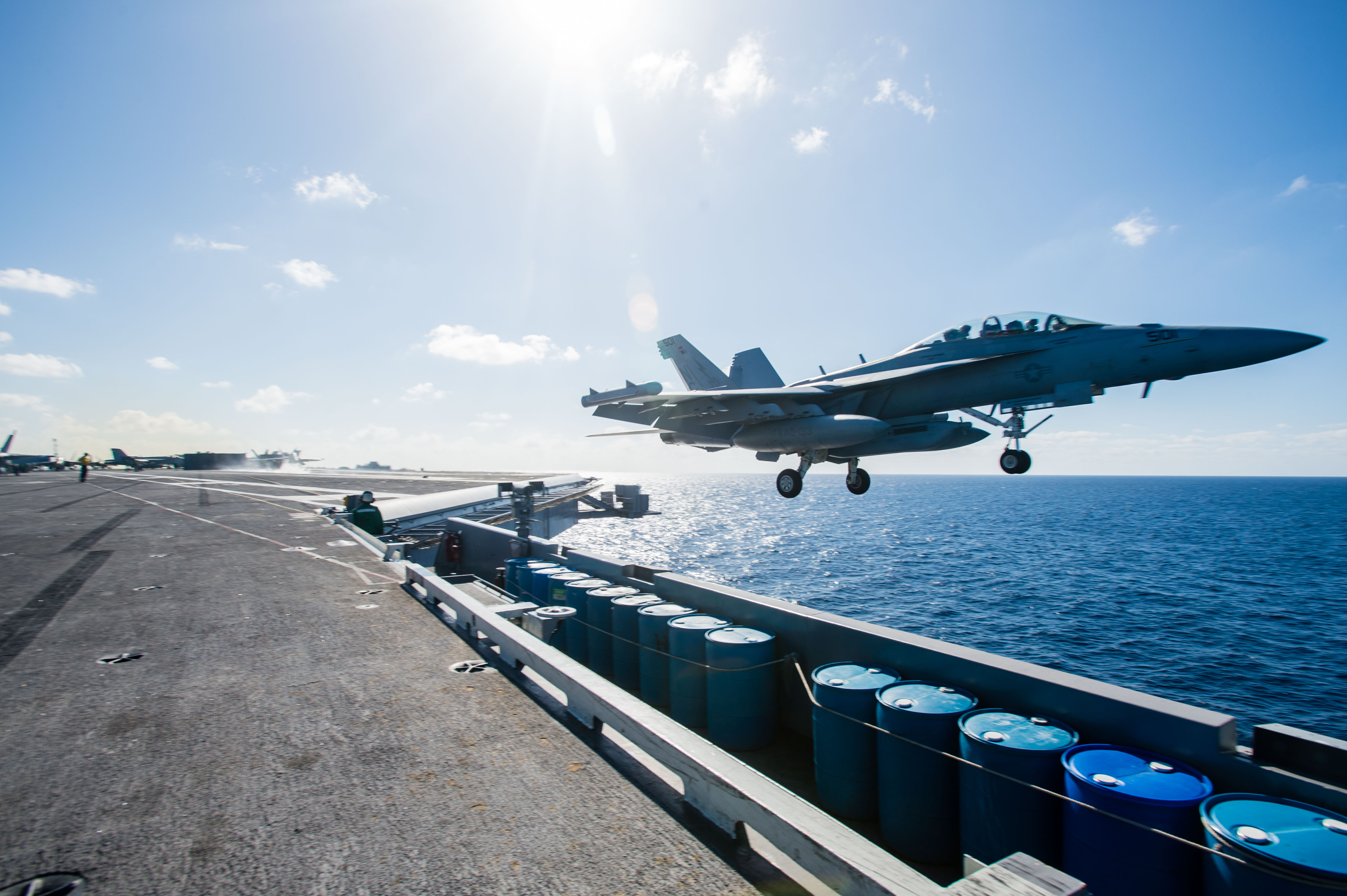
The Navy may know within the next year if it has enough Boeing EA-18G Growlers to meet not only its own airborne electronic attack needs but also to cover all joint operational needs, the Navy’s director of air warfare (OPNAV N98) told lawmakers last week – though by then there may be a cost increase associated with restarting Growler production.
The Navy bought seven Growlers this fiscal year – not because its five-year budget plans called for more planes, but because Congress helped secure the funding to keep the common Growler and F/A-18E-F Super Hornet production line running until further domestic and international sales could be shored up. Now, though, the Navy has no additional plans to buy more Growlers, and there is no serious international interest in the program, Dan Gillian, Boeing F/A-18 and EA-18G programs vice president, told USNI News in an April 21 interview. The airframe production will continue, as Super Hornet demand remains, but the additional work to outfit the planes for sophisticated electronic attack missions will cease.
Gillian said most of the components of the Growler kit are common with other programs in the Navy, and the main component – the Next Generation Jammer – is under production with Northrop Grumman as the Navy replaces the Vietnam-era AN/ALQ-99 tactical jamming system.
So if the Pentagon ultimately decides it needs more Growlers, “there will of course be production break costs, some things associated with that. We view it as something that is possible, but certainly a little bit of a costly way to acquire Growler kit,” Gillian said, adding that Boeing does believe there is additional need for more Growlers and is in talks with Northrop Grumman about how to proceed once the companies complete the last seven-plane order.
Director of Air Warfare Rear Adm. Mike Manazir said at an April 20 Senate Armed Services seapower subcommittee hearing that the Navy cannot yet make a determination about future Growler needs because the Pentagon as a whole has not decided on its airborne electronic attack needs. The Office of the Secretary of Defense and the Joint Staff have two studies going on currently, one on the total number of Growlers needed for joint operations and the other on various ways to conduct airborne electronic attack – through the Next Generation Jammer or otherwise. Manazir told the senators that once those studies wrap up, within the next year, the Navy would have enough information to decide if it needs to buy more planes.
The Navy has bought 160 Growlers, and “we feel that sources the Navy requirement for airborne electronic attack. When the Marine Corps retires its EA-6B in 2019, the Growler will be the only [Defense Department] airborne electronic attack platform that will be flying. We are still conducting the study that determines whether the number of Growlers is sufficient to cover all the missions across the joint force. “
Manazir praised the Growler and the Next Generation Jammer in particular, calling it a much-needed replacement for a 40-year-old podded system that struggles to keep up with today’s advanced threats.
“The reason we are purchasing the Next Generation Jammer, which its first increment will reach initial operational capability around 2021, is that the threat is getting more and more advanced, and that threat is in the electromagnetic spectrum,” he said.
“The next war is going to be fought in the electromagnetic spectrum. The ability to use [radio frequency] energy by us to assure our systems and to deny the use of enemy systems is going to be the predominant measure by which we will succeed. The Next Generation Jammer podded system is designed to go after those advanced threats, and it is designed to continually track and outmatch the threat as we go forward.”





